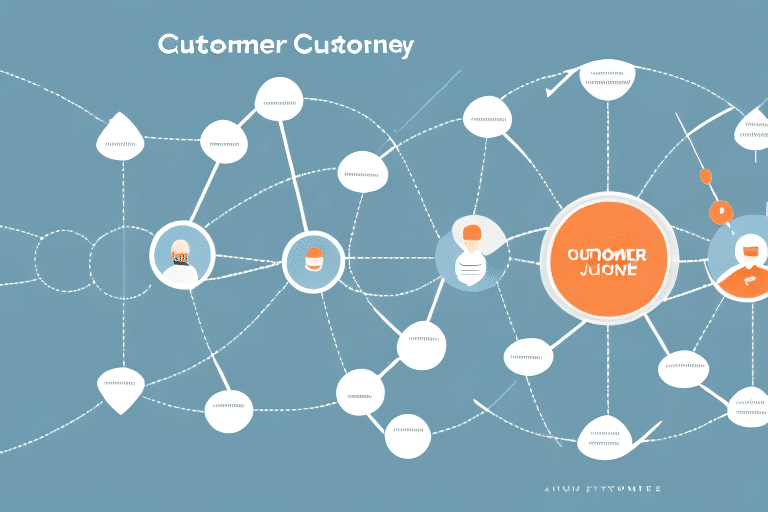Importance of Customer Retention
In today’s highly competitive business landscape, customer retention is essential for the sustained growth and success of any company. Retaining existing customers is not only more cost-effective than acquiring new ones, but it also fosters a loyal customer base that can drive predictable revenue streams.
Cost Efficiency
Acquiring new customers can be significantly more expensive than retaining existing ones. According to a study by Harvard Business Review, it costs five times more to attract a new customer than to keep an existing one.
Brand Advocacy
Loyal customers are more likely to recommend your business to others, effectively acting as brand advocates. Positive word-of-mouth can expand your customer base organically and enhance your brand reputation.
Predictable Revenue
Existing customers provide a steady and predictable revenue stream. They are also more likely to purchase additional products or services over time, increasing their Customer Lifetime Value (CLV).
Key Metrics for Measuring Customer Retention
Understanding and tracking the right metrics is crucial for evaluating the effectiveness of your customer retention strategies. Here are some key metrics to consider:
Customer Churn Rate
The churn rate measures the percentage of customers who stop using your product or service during a specific time period. A lower churn rate indicates better customer retention.
Customer Lifetime Value (CLV)
CLV estimates the total revenue a business can expect from a single customer account throughout the business relationship. Increasing CLV is a primary goal of effective retention strategies.
Net Promoter Score (NPS)
NPS gauges customer satisfaction and loyalty by asking customers how likely they are to recommend your company to others. A higher NPS suggests stronger customer loyalty.
Repeat Purchase Rate
This metric tracks the percentage of customers who make more than one purchase. A higher rate indicates successful retention efforts.
Understanding the Customer Journey
To retain customers effectively, it's essential to understand their journey from initial awareness to long-term loyalty. This journey typically includes the following stages:
- Awareness: The customer becomes aware of your product or service.
- Consideration: The customer evaluates whether your offering meets their needs.
- Purchase: The customer makes a purchase decision.
- Retention: The customer continues to use your product or service and remains loyal.
- Advocacy: The customer recommends your business to others.
Enhancing the Post-Purchase Experience
Improving the post-purchase experience is vital for retention. This can include follow-up communications, such as thank-you emails, surveys, and providing ongoing support. For more insights, refer to Shopify's guide on post-purchase experiences.
Effective Strategies for Customer Retention
Implementing well-crafted strategies can significantly enhance your customer retention rates. Here are some proven approaches:
Provide Exceptional Customer Service
Responsive and effective customer service can resolve issues promptly and leave a positive impression, encouraging customers to stay loyal.
Create a Loyalty Program
Loyalty programs reward customers for their repeat business. Offering points, discounts, or exclusive offers can incentivize continued patronage.
Personalize the Customer Experience
Using data analytics to tailor products, services, and communications to individual customer preferences makes customers feel valued and understood.
Collect and Utilize Customer Feedback
Regularly gathering feedback through surveys or direct interactions helps businesses understand customer needs and adjust their offerings accordingly.
Leveraging Technology and Data
Modern technologies and data analytics play a crucial role in enhancing customer retention strategies:
Data Analytics
Analyzing customer data allows businesses to identify trends, preferences, and potential churn indicators, enabling proactive retention measures.
Email Marketing
Targeted email campaigns can keep customers informed about new products, offers, and personalized recommendations. Best practices include segmenting email lists and personalizing content.
Mobile and Web Applications
Offering mobile and web apps can increase customer engagement by providing convenient access to services and personalized features.
Social Media Engagement
Active engagement on social media platforms helps build a community around your brand, fostering loyalty and addressing customer concerns in real-time.
Common Mistakes in Customer Retention
Avoiding common pitfalls can help maintain high retention rates:
- Assuming Customer Loyalty: Never take loyalty for granted. Continuous effort is required to keep customers engaged.
- Ignoring Customer Complaints: Addressing complaints promptly is essential to prevent churn and maintain trust.
- Lack of Personalization: Failing to tailor experiences to individual needs can make customers feel undervalued.
Success Stories and Case Studies
Examining successful customer retention strategies can provide valuable insights:
- Nike: Nike's loyalty program offers exclusive products and personalized experiences, fostering strong customer loyalty.
- Amazon: Amazon leverages personalized recommendations and a seamless shopping experience to retain customers effectively.
- Starbucks: Starbucks' mobile app enhances convenience and offers rewards, contributing to high retention rates.
Conclusion
Effective customer retention is a cornerstone of business success. By understanding the customer journey, tracking key metrics, and implementing robust retention strategies such as exceptional customer service, loyalty programs, and personalized experiences, businesses can enhance retention rates, boost revenue, and cultivate a loyal customer base.




















